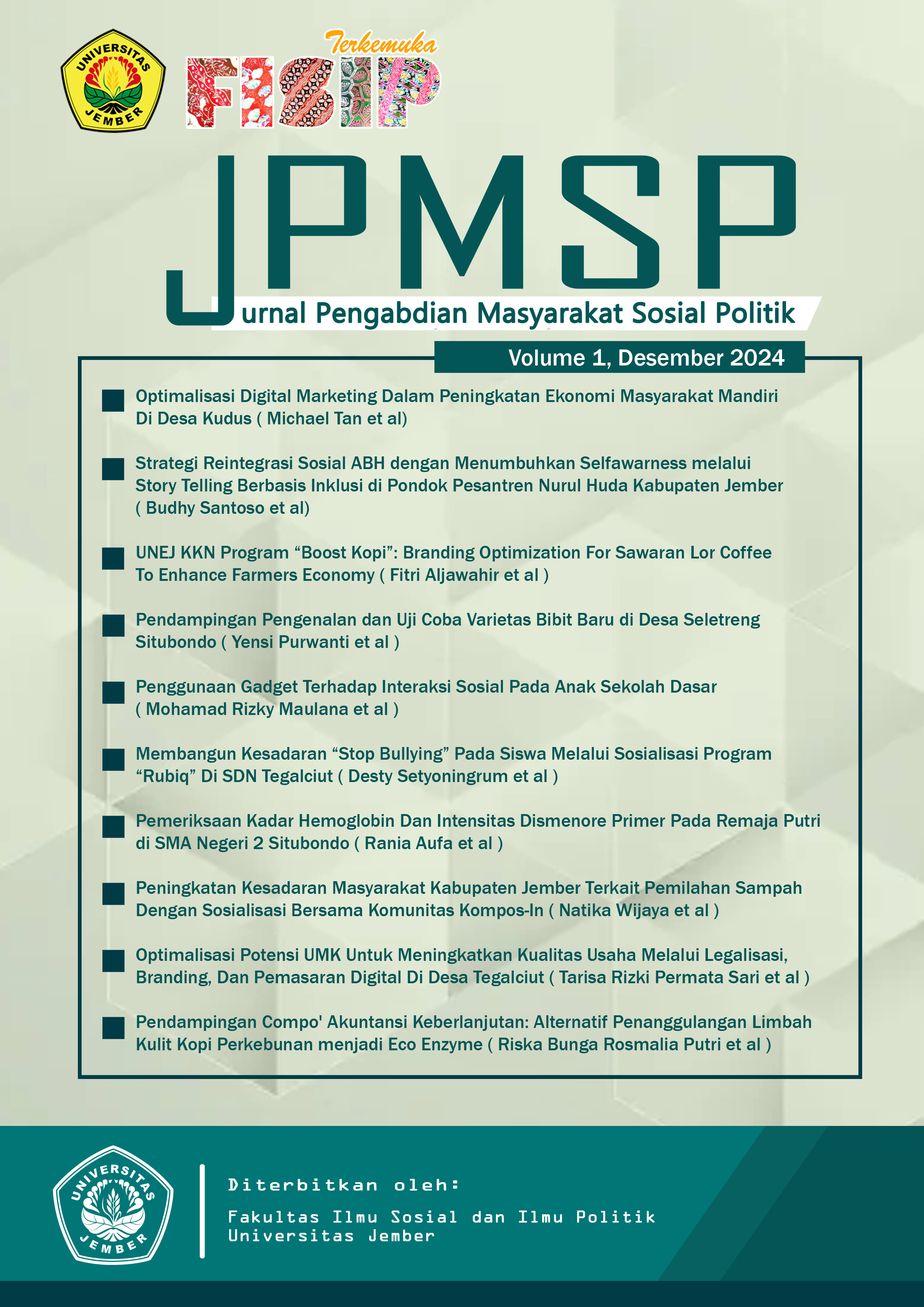Examination of Hemoglobin Levels and Intensity of Primary Dysmenorhore in Teenage Girl at SMA Negeri 2 Situbondo
Keywords:
Anemia, Dysmenorrhea Intensity, Hemoglobin LevelsAbstract
Some women, especially teenagers who have busy activities, often experience dysmenorrhea which is quite disturbing. Data obtained from the East Java Province Adolescent Reproductive Health Survey (SKRR) in 2021 showed that 4,297 or 90.25% of adolescents experienced primary dysmenorrhea. Dysmenorrhea can have an impact on the daily activities of adolescents, such as reduced concentration when studying, absence from school, obstruction sports activities, and can cause emotional conflict, tension and anxiety, as well as giving rise to uncomfortable feelings. Dysmenorrhea that is not treated properly can cause pathological conditions and also have an impact on infertility. Hemoglobin levels are one of the components that influence dysmenorrhea. The aim of this community service is to increase knowledge of teenage girls about the importance of maintaining normal hemoglobin levels in order to prevent primary dysmenorrhea in teenage girls. The method uses the NRS questionnaire to measure the intensity of primary dysmenorrhea and check hemoglobin levels using the Easy Touch GCHB device. The results of the examination showed that the highest hemoglobin levels in teenage girls were in the moderate anemia category, 48 people (61%). Meanwhile, the intensity of dysmenorrhea was dominated by mild pain in 56 people (71%).






